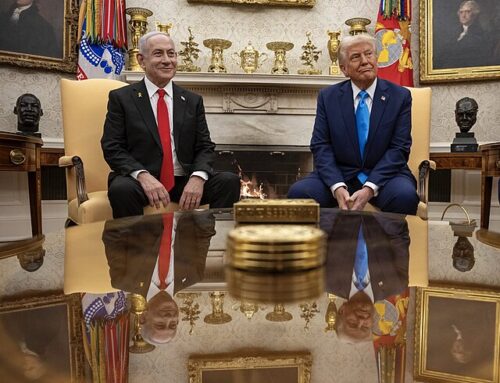Since 1967 there have been two major theoretical and practical questions in conducting the Arab-Israeli peace process with American mediation. The first consists of whether to go for a comprehensive solution at a peace conference by dealing with all fronts and all parties at the same time. This was the approach that was traditionally favored by the Arabs, by many American and European academics, and by the State Department Arabists. This approach was rejected by Israel, by moderate Arab leaders like President Anwar Sadat of Egypt, and by American realists like Henry Kissinger. Israel rejected it because it gave too much power to the Arabs, and Israel did not want to return territory to a leader that might likely go to war against it in the future.
Sadat and Kissinger rejected it because it put too much power in the hands of radical Arab leaders like President Hafiz al-Assad of Syria, Yasir Arafat of the PLO, and Presidents Bakr and Saddam Hussein of Iraq. It gave the radicals a veto over Arab-Israeli diplomacy.
There were two attempts by American administrations to negotiate a comprehensive solution: by Secretary of State William Rogers in 1969 and by President Jimmy Carter and his administration in 1977. Kissinger helped to sabotage the first attempt by letting Ambassador Rabin know that there would be no penalty from Nixon for Israel not going along with Rogers’s diplomacy. Rogers was forced to settle for a bilateral ceasefire agreement between Egypt and Israel in August 1970.
Sadat thwarted Carter’s approach for a comprehensive peace by going to Jerusalem in November 1977. (What Sadat did, with barely a sop to the Palestinians in a provision of the treaty, was sign a separate peace with Israel.) The result was the first Israeli peace treaty with any Arab country.
For four decades the other main question has been which track to favor when faced with multiple bilateral negotiating tracks. Israel needs time to absorb territorial concessions and so cannot reach agreements on multiple tracks simultaneously. This first became an issue in the summer of 1974, when Kissinger had completed the Israeli-Syrian Separation of Forces Agreement and was faced with the question of which front to turn to next for a follow-up agreement in his step-by-step approach. Israeli Foreign Minister Yigal Allon, King Hussein of Jordan and Kissinger all preferred an Israeli-Jordanian separation agreement. Shimon Peres, who was then the defense minister and the bitter rival of Prime Minister Rabin, favored a second agreement with Egypt, which Sadat also favored.
Rabin sided with his rival against his former Palmakh commander. Why? Rabin had promised the National Religious Party a referendum would be held before any of the West Bank territory would be returned to Jordan. Kissinger was critical of Rabin at the time for being timid. But Rabin was right. The Labor Party wanted to retain the Jordan Valley in any permanent peace deal with Jordan. The logic of a separation of forces agreement with Israeli troops pulling back along the Jordan River was contrary to this.
Hussein had always rejected the Allon Plan that called for a partition of the West Bank between Israel and Jordan with Israel retaining about a third of the territory. Instead, by opting for Egypt, Rabin started the process that resulted in the signing of the Sinai II Interim Agreement in September 1975. This agreement laid the foundation for the subsequent peace treaty that the Carter administration mediated between Egypt and Israel in 1978 and 1979. It also established Rabin’s reputation as a dove.
In 1992, Rabin was back in power and faced the choice of making peace with Syrian President Hafiz al-Assad or with Yasir Arafat and the PLO. A choice between a moderate Arab leader and a radical as a peace partner is usually a no-brainer. The difficulty is when the choice is between two moderates—as in 1974—or between two radicals—as in 1992 and again in 2000. I’ll discuss Rabin’s choice and Barak’s choice in Part II.




Leave A Comment